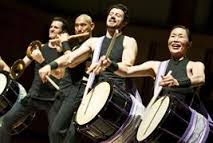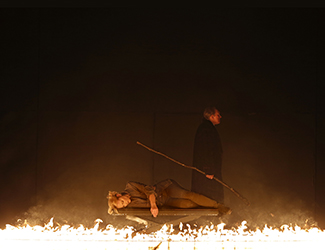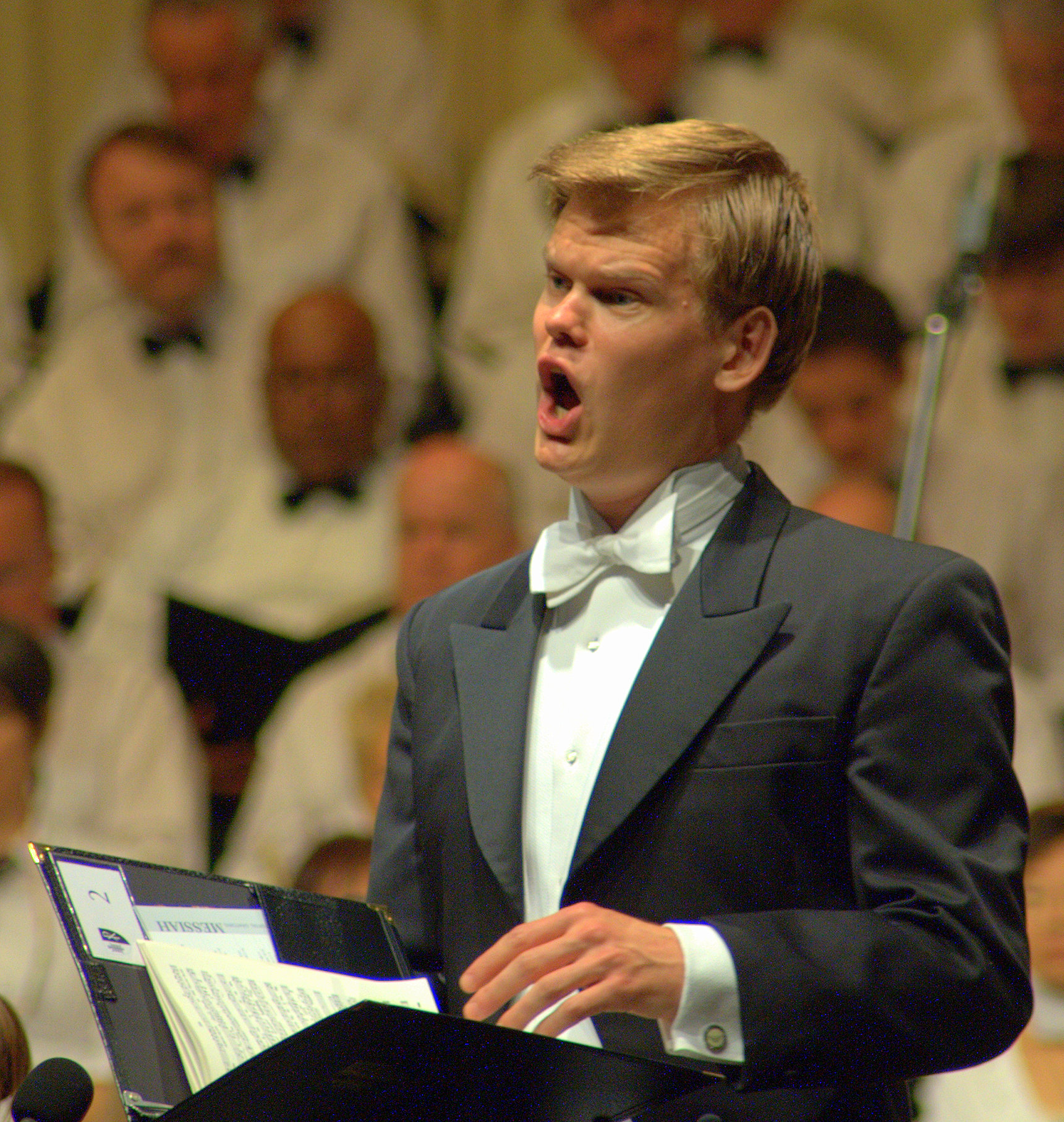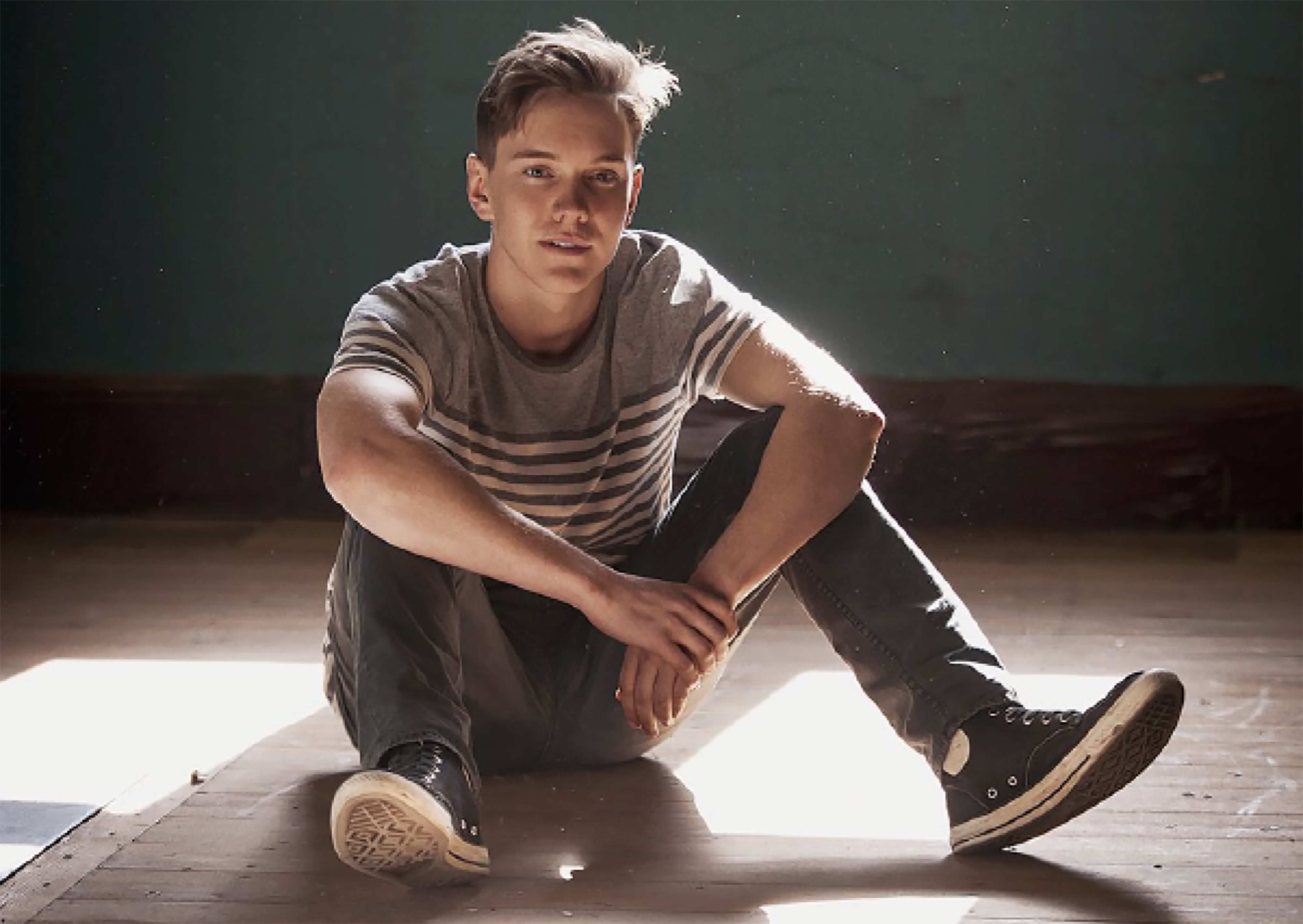‘pulse:heart:beats’ – “A Kaleidoscope of Sounds and Imagery” from Taikoz and Synergy Percussion

‘Kaleidoscope’ – a word of Greek origin and a composite of kalos, meaning beauty, eidos, meaning shape, and skopeo to look or to examine. Together, they refer to the ‘observation of beautiful forms.’
It is a word, says Ian Cleworth , which has recently been used a lot in the vocabulary of TaikOz and its sister ensemble Synergy Percussion as 11 musicians prepare with over 40 instruments for their 2013 presentation pulse:heart:beats. “It neatly sums up what we’re trying to achieve, which is a kaleidoscope of sounds and imagery.”
Formed in 1997. the Japanese drum ensemble creates new music which transcends cultural boundaries. They have created over two dozen original works for drum ensemble, some of which feature instruments like the shakuhachi, koto, marimba, saxophone and didgeridoo.
TaikOz and Synergy Percussion have been presenting pulse:heart:beats concerts together for decade. Ian Cleworth the Artistic Director of TaikOz explains “Every time we present a pulse:heart:beats concert we add a different theme. This year we’re working with film makers adding a very visual element to the concert. We’re not combining it like a sound track to film”, he emphasises. ” Rather, the sound of the instruments will trigger visual imagery so there is a closer connect between sound and image – it’s more interactive. In a film soundtrack, the music supports the vision – it colours and comments and sometimes leads or creates the mood . It interprets whatever is happening in the film. What we’re doing is more of an equal marriage so it’s very much a dialogue between the visual and the aural.”
Both TaikOz and Synergy Percussion have started to engage with visual artists using contemporary technology, creating images and matching them to sound . Anyone watching the drummers of TaikOz would appreciate the sheer physicality and the raw energy of playing these leviathans of percussion. As Cleworth observes ” We’re a very visual group anyway. Movement is an important part of our performance. The idea of extending our playing through visual imagery is going to be very interesting.”
Ian Cleworth also point s to the contradiction intrinsic in this partnership of sound and movement. “There’s a lot of very sophisticated technology involved – but our instruments, are very simple and traditional. They’re beautiful hand crafted instruments from Japan , made from natural materials – skin and wood with roots that go back centuries. Juxtaposing these instruments with the latest in visual technology is a really exciting concept.”
Is there a risk that the projected images might detract from what the musicians are doing on stage? “That’s always a possibility” says Cleworth and continues, illustrating the interaction between music and images. ” At times the visual and aural stimuli can be so great that they’re too much to take in at once. I’ve had that experience – and it can be frustrating – but it is also one of the most exciting things about live performance. Listening to music at a concert is always very satisfying . At a more traditional concert we’re not primarily thinking about the visual elements but these elements of a performance are incredibly potent, even if they are processed at a sub-conscious level – otherwise, we would listen to fabulous music on a sound system at home and we wouldn’t go to a concert hall. The engagement of the musicians on stage amongst themselves, as well as with the music itself, translates very powerfully into images, and makes for a very stimulating experience.”
” I’m not suggesting that every concert should have that filmic element but I think that in the right context it really challenges the notions of live music performance and is a good idea. ” he adds.
Like a Gamelan orchestra, a flamenco ensemble or jazz band, TaikOz and Synergy perform without music. The material for this concert has been composed by the performers themselves. And like a Gamelan, flamenco or jazz music, there are moments of improvisation. “Improvisation is very important to what we do,” says Cleworth, ” but unlike contemporary jazz where a soloist will take a melody and extrapolate that to different places, our is not like that – all of our solo work is within a specific language and we stay within the confines of the structure of the piece. We try to make improvisation as seamless as possible so we use it in bridging passages. But it does offer a chance for the performer to give of themselves and express their individual musical personality. At the same time it shouldn’t draw attention to itself too much.”
Ian Cleworth is keen to dispel preconceptions that pulse:heart:beats is exclusively about percussion. “There’s lots of melody and harmony as well – the plethora of drums and percussion instruments on stage shouldn’t overtake this fact. There is singing, flute playing and mallet percussion from the marimba and vibraphone giving lots of beautiful melodies along with the incredible rhythm making. For some people the idea of full on drumming is scary and off-putting – but the one thing that surprises our audiences quite pleasantly the fact that there is so much melody going on.”
” We plan to create a kaleidoscope of both sound and vision. We’re challenging convention, so some people may not like everything. It will be a concert where the audience takes in the same images and sounds, but translates that into their individual experiences, with each person taking home something different – and that’s exciting!”
Ian Cleworth was interviewed by Shamistha de Soysa for SoundsLikeSydney©
Click here for concert information







